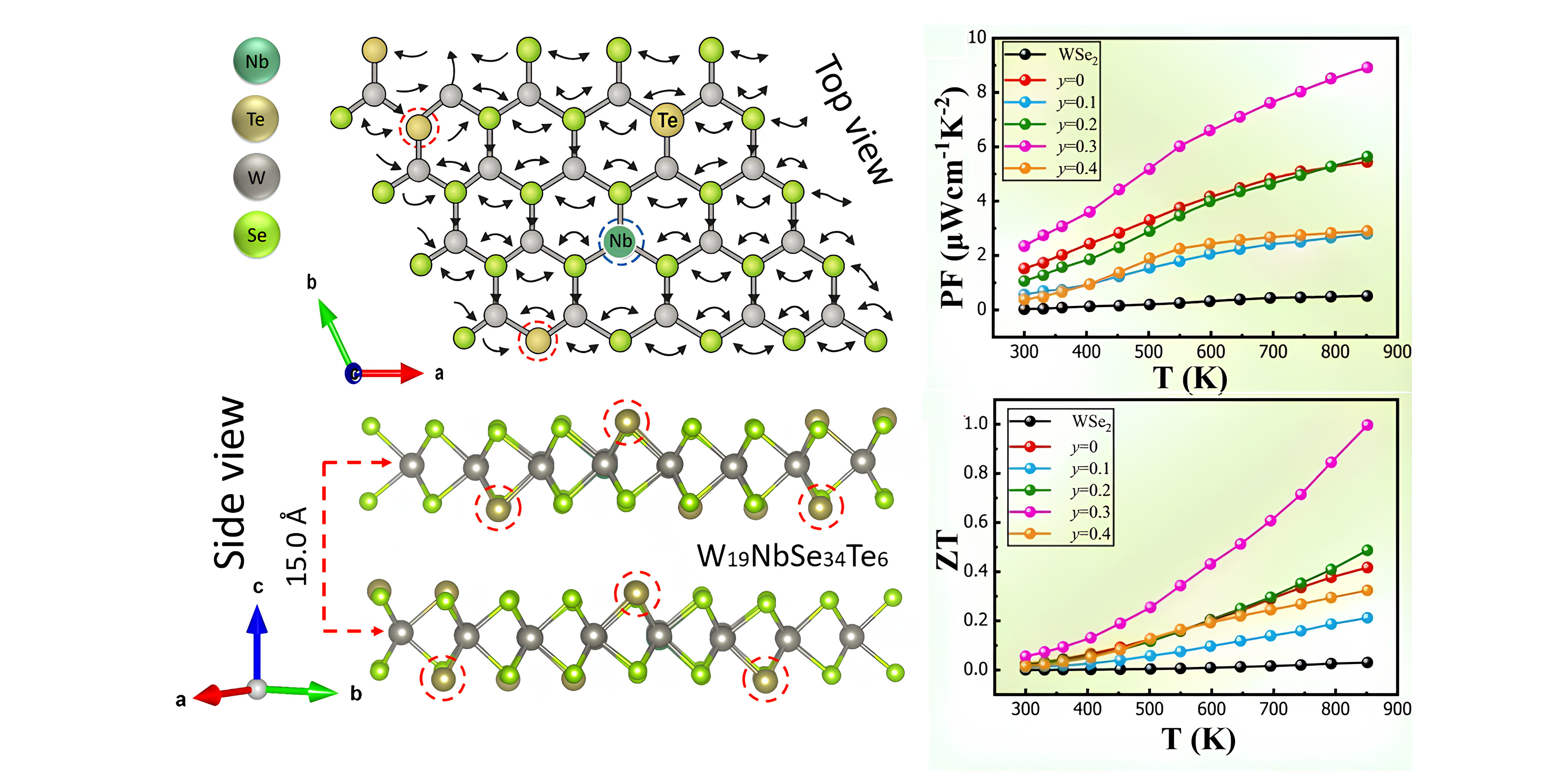
Redesigning materials to harvest wasted heat
10-06-2025
Thermoelectric (TE) materials, which convert waste heat into electricity, are gaining critical importance in addressing global energy challenges. In a significant breakthrough, scientists from the National Centre for Nuclear Research (NCBJ) in Poland, in collaboration with researchers from China, have achieved a significant enhancement of the TE performance of tungsten diselenide (WSe2), a two-dimensional (2D) material already known for its promising thermopower and environmental friendliness.
WSe2 is a 2D material known for being environmentally friendly and capable of generating electricity from heat, thanks to its strong thermopower. However, until now, some technical hurdles have limited its use notably, poor electrical conductivity and high thermal conductivity, which prevent it from efficiently converting heat into energy.
To address these challenges, the research teams applied a cutting-edge materials design strategy. By carefully introducing small amounts of niobium (Nb.) to replace some of the tungsten atoms, and tellurium (Te) to replace part of the selenium, they created a modified version of WSe2 with dramatically improved properties.
The results were striking: at a temperature of 850 °C, the material’s power factor, a key measure of thermoelectric performance, increased by 17 times, while its thermal conductivity dropped by more than 70%. These changes significantly boost the material’s ability to generate electricity from heat, making it a much more viable option for real-world applications.
Key theoretical insights behind the breakthrough came from dr hab. Javier Dominguez-Gutierrez and dr Amil Aligayev at the National Centre for Nuclear Research in Świerk. Using advanced computer simulations based on density functional theory (DFT), they uncovered how co-doping with niobium (Nb.) and tellurium (Te) alters the electronic properties of WSe2 to significantly boost performance.
"By analyzing how electrons behave through simulations of the density of states, band structure, and transport properties we showed that these changes lead to better conductivity and much higher power output" – says dr Aligayev from NOMATEN CoE at NCBJ.
"This research not only showcases the potential of WSe2 as a next-generation thermoelectric material, but also illustrates how international collaboration and smart material design can drive progress toward cleaner energy technologies" – dr Dominguez concludes.
This remarkable result positions the material among the most promising candidates for harvesting waste heat in high-temperature environments, and marks an exciting leap forward in the design of energy-efficient materials at the atomic level.
The findings of this study were published in the prestigious Chemical Engineering Journal, under the title: „Synergistic modulation of band structure and phonon transport for higher thermoelectric performance of WSe2” https: //doi. org/10.1016/j. cej. 2025.164510.
The research was supported by the National Natural Science Foundation of China (grants 12174393, 11674322, 51672278, 51972307) and the Foundation for Polish Science under the International Research Agendas PLUS program (grant MAB PLUS/2018/8).




